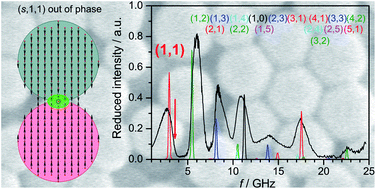Vibration spectroscopy of weakly interacting mesoscopic colloids
Abstract
Brillouin

- This article is part of the themed collection: Bridging the gap between soft and hard colloids
* Corresponding authors
a
Dipartimento di Fisica, Università di Trento, Via Sommarive 14, 38123 Trento, Italy
E-mail:
montagna@science.unitn.it
b Department of Physics and Astronomy, University of Pennsylvania, Philadelphia, PA 19104, USA
c Max Planck Institute for Polymer Research, Ackermannweg 10, 55128 Mainz, Germany
d
Department of Materials Science, University of Crete and FORTH, 71110 Heraklion, Greece
E-mail:
fytas@mpip-mainz.mpg.de
Brillouin

 Please wait while we load your content...
Something went wrong. Try again?
Please wait while we load your content...
Something went wrong. Try again?
M. Mattarelli, M. Montagna, T. Still, D. Schneider and G. Fytas, Soft Matter, 2012, 8, 4235 DOI: 10.1039/C2SM07034K
To request permission to reproduce material from this article, please go to the Copyright Clearance Center request page.
If you are an author contributing to an RSC publication, you do not need to request permission provided correct acknowledgement is given.
If you are the author of this article, you do not need to request permission to reproduce figures and diagrams provided correct acknowledgement is given. If you want to reproduce the whole article in a third-party publication (excluding your thesis/dissertation for which permission is not required) please go to the Copyright Clearance Center request page.
Read more about how to correctly acknowledge RSC content.
 Fetching data from CrossRef.
Fetching data from CrossRef.
This may take some time to load.
Loading related content
